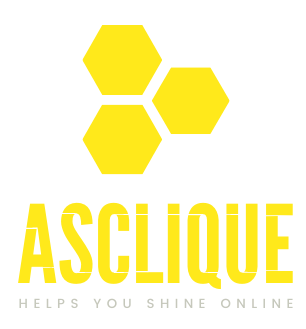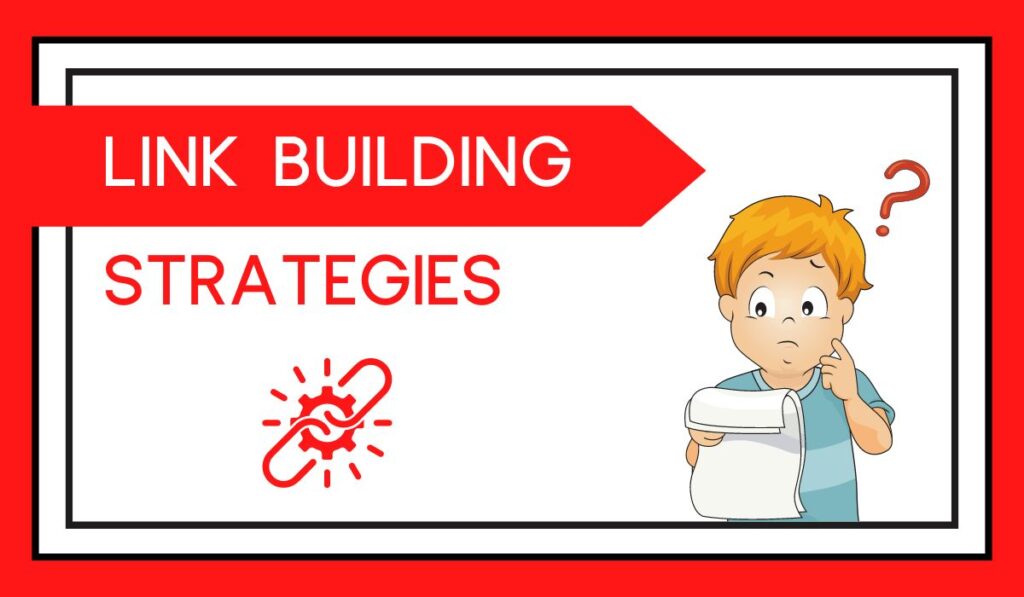Businesses that incorporate link building into their content marketing strategy is on the rise, with 95% of respondents to our trends report noting they are prioritizing link building in 2024, up from 85.3% in 2023.
To make sure your site has a fighting chance to rank and secure valuable clicks, you need to develop a link building Strategies plan of action.
After perfecting our link building strategy for a while, we’ve now found our sweet spot.
We’ve stopped most manual link building to focus mainly on building links organically — no outreach involved. This has allowed us to double our content production of the same quality content, and still generate links that are future-proof.
That said, there are still a range of link building strategies we’ll cover in this post, including:
Use Social Media
A more roundabout way to increase incoming links is to get active on social media and engage regularly with reporters and bloggers in your niche.
Creating and building an online presence for your brand will increase your audience size, boost page views, and can even lead to new links over time.
Here are some tips when using social media for link building Strategies:
Use hashtags strategically: Say a reporter searches for a hashtag on Twitter, and you used that same hashtag to tweet about a recent study you wrote. You might get coverage from that tweet.
Find journalist requesting data: Journalists even use Twitter to request data, so monitor hashtags like #journorequest or #prrequest for linking opportunities that fit your brand.
Actively engage on industry platforms: Commenting on others’ blog posts is another strategy you can implement to boost your brand awareness.
These strategies not only show that you are an active participant in industry conversations, but also help you build a relationship with other bloggers who may reach out to you for coverage in the future.
Perform Broken Link Building
Broken link building — also known as BLB — is a strategy that helps secure links on resource pages by finding broken links currently listed and suggesting your post as an alternative.
It’s a relatively easy way to earn links because after you’ve created your piece of content, most of the work is off your plate.
You’ll want to create a guide that covers a topic relevant to your site in order to get links that prove your value and will be an alternative for that broken link. For example, as a content marketing agency, creating a list of free data sources will bring value to other content creators looking to level up their pieces with relevant statistics.
When used in tandem with topical keywords, you can start your search for potential prospects on the right foot. But what exactly do you say once you find a good prospect? We’re glad you asked.
Look at Competitors’ Links
One good way to find out which link building strategy works for your type of content is by doing some “spying” on your competitors by looking at your competitor’s links, also known as backlinks.
And as a bonus, this helps you understand the type of content your audience enjoys and links to the most — which in turn helps you write with SEO in mind.
There are a couple of ways you can do this. By using a tool such as Ahrefs, you can:
Look at your competitors’ top pages to learn what type of content brings them the most traffic and which keywords they’re targeting.
Examine your competitors’ backlinks to identify which pages attract the most links and determine who is linking to them the most.
Look at your competitors’ posts to learn what type of content and which keywords are ranking the highest to get some inspiration.
When analyzing your competitors’ posts, ask yourself these questions:
Are they doing guest blogging?
What post format seems to be the most effective?
Which pages and markets are linking to them?
Which keywords are they targeting?
This way, you’ll not only have a better understanding of the type of content to create that will generate links, but also which markets and websites to reach out to. You can then perform outreach, targeting markets and sites that link to your competitors the most.
Make Your Website More Visible
If you want to build more links to your website, you need to also build a personal brand and increase your visibility.
One way to do that is by investing your time in off-page SEO, which consists of optimization strategies not directly made to your website, such as local citations and fixing broken links.
Some of these strategies include:
Ensuring third-party citations are accurate and consistent: Double-check information like your name, address, and phone number are correct.
Creating and maintaining your Google My Business listing: If your business has a physical address, create a listing on Google and update the information regularly.
Claiming your listing on popular user-generated content sites: Contact the site to claim your business and provide them with the right information.
Improving the public perception of your brand: Invest in digital PR, social media marketing, influencer marketing, and review management.
Keep Track of Your Links
If you’re like us, you’re probably guilty of checking for new links at least once a week — or maybe every day, but we won’t judge.
Aside from ensuring you have a healthy backlink profile, keeping track of your links helps you understand who is contributing to your backlink profile, meaning who links to your site. This way, you’ll be able to focus on relevant industries when performing outreach and creating content.
There’s also a thing called link relevancy, which is even more important than the authority of those who link to you.
That’s because when you have relevant links, you’re telling Google that you’re a trusted source for your industry. This helps you rank for terms that are important to your business.
Share Your Content on Forums
Forums are a great way to find answers to your questions and connect with people online. They can also be a useful link building strategy since they provide a valuable way to get more traffic to your blog post, which increases the chances of people linking to you.
When sharing your content on forums, it’s important not to just link to your post and hope for the best. After all, forums usually have rules and common practices to follow, and you need to abide by them.
When sharing your post on forums, you should:
Add to the conversation by answering comments.
Give tips and advice.
Follow the forum rules.
Link to your post as an extra resource.
To find forums to post on, start by searching for topics or common questions people ask related to your industry. Alternatively, you can make a habit of browsing through forums related to your topic.
You can engage on forums such as:
Quora
Facebook Pages
As a bonus, browsing through forums might spike your creativity and introduce you to new topics and keywords to write about.
Try Link Reclamation
Link reclamation is the process of reclaiming lost or unlinked organic mentions to your site.
While this strategy is most successful for bigger brands that get a lot of press coverage, you can still see positive results as a smaller website.
There are two tactics for link reclamation:
Reclaiming a lost link: If a website used to link to your site but removed the link later, there’s a possibility you can reach out to resecure that coverage.
Correcting un-linked organic mentions: If a website mentions your brand name but doesn’t link to it, email them and ask for proper credit to a relevant page.
Consider Guest Blogging
Likely the strategy you’ve heard about the most and probably even tried yourself, guest blogging is another great way to earn mid- to top-tier links back to your site.
You might’ve heard that Google warns against guest posting, but that doesn’t mean you need to stay away from it entirely. The new version of guest posting is all about intention.
Approach your guest posting strategy with an intent to educate, and look for sites that share outside content without advertising guest posting opportunities.
Within that realm, you’ll find mid- to top-tier sites with topical relevance that will likely accept great content.
Reaching out to a site that doesn’t explicitly ask for pitches can be tricky. With these outreach emails, it’s important to highlight why their readers should care about your content.
Focus on Passive Links
At Siege, we’ve learned that on average, the cost per link of search-driven posts on an 18-month timeline was significantly better than link-driven posts. The main strategy behind this process is to find topics that have strong passive link intent, and then watch all the organic links wash in.
As a rough indicator, look for topics you or your competitors rank for on Ahrefs’ Top Pages view that have a high number of links. If it has traffic and a good number of links, that’s a strong first indicator of passive link intent. Implementing effective link building strategies can help you leverage these insights to improve your own link acquisition efforts.
From there, you’ll want to confirm that the links are steadily building, as opposed to building through a big spike or manual campaign.
If you see a gradual graph, that’s a good sign that if you can get ranking, you’ll generate passive links to your domain.
Also Read: Avoid These Common for Better Engagement
Include Infographics
Creating beautifully designed infographics can be a good way to secure valuable links on a weekly basis. And when coupled with informative and interesting articles, infographics make great fodder for guest posts.
Using infographics as an addition to your informative post — rather than the main part of the post itself — means you’re likely to get more topical links from bloggers rather than the typical (highly penalized) infographic farm sites. Implementing effective link building strategies can help you attract these valuable, relevant links.
A well-designed and maybe even animated asset, like this example from CleverTap, helps take your infographic pitch to the next level and encourages a quicker share. You can highlight your design asset in your pitch, too.
Target Resource Pages
Creating informative and unique content means you can also target pages looking to share your post as a resource.
This works especially well for content revolving around beginner “how-to” and “what is” topics.
These types of posts tend to be longer, overviewing everything you need to know about a topic. For example, Zola’s post on how to plan a wedding is a great addition to a resource page for wedding planners.
After creating your resource post, you can start looking for websites with resource pages that could link to it. Incorporating effective link building strategies can help you identify the best opportunities for gaining valuable backlinks.
To do this, search for pages using search modifiers together with your keyword. For example:
Inurl:resources
Intitle:resource page
Intitle:helpful links

